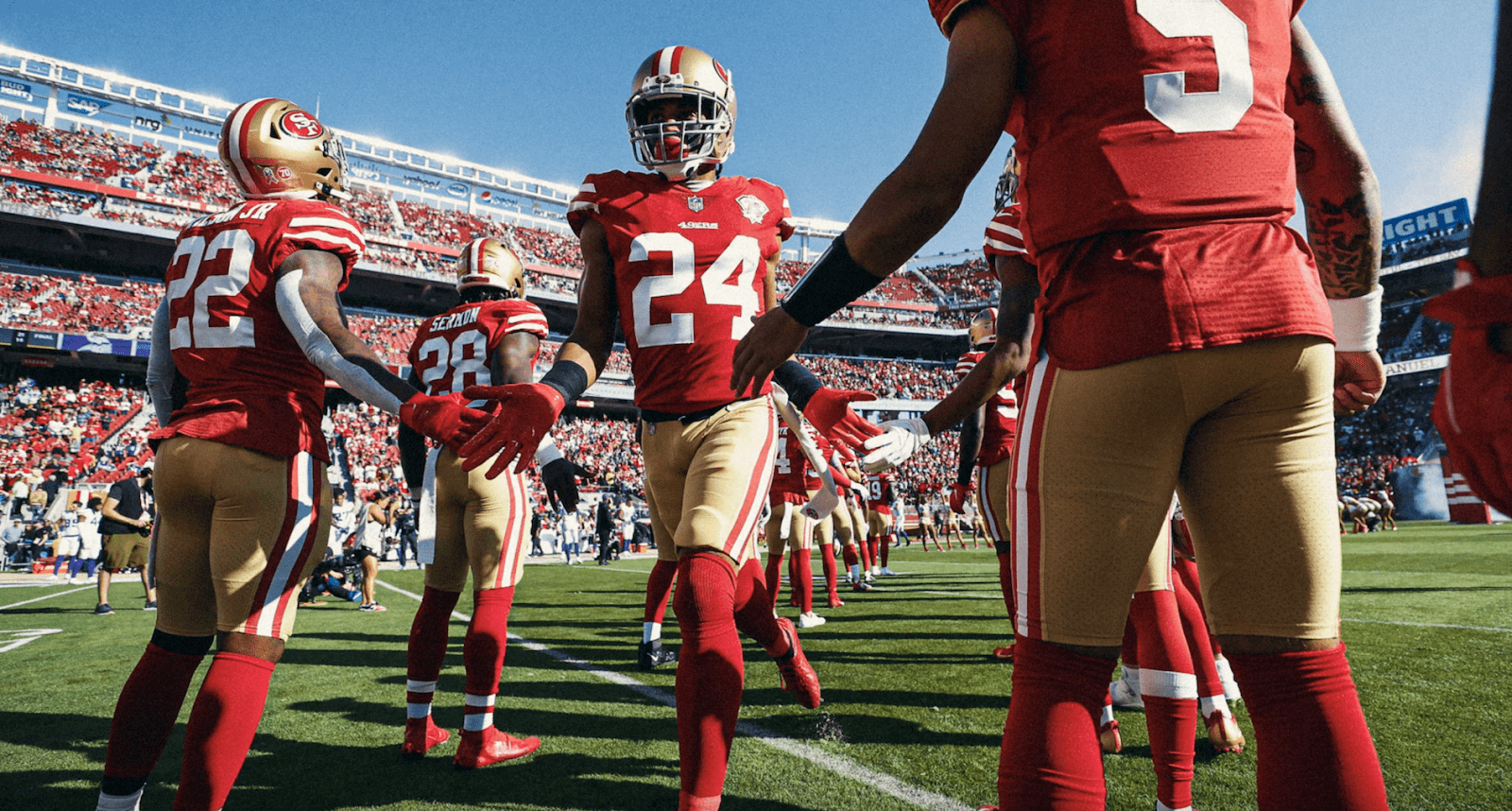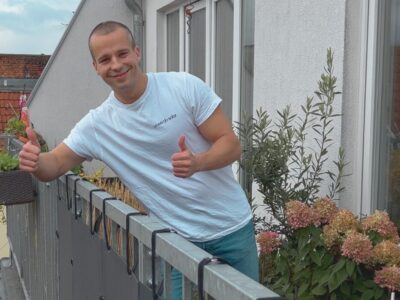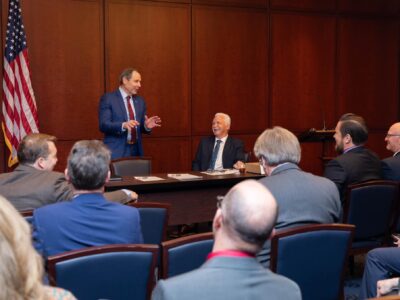Levi’s Stadium, home to the San Francisco 49ers, is ranked among the greenest sports venues in the country. Sustainability was a major design aspect for the building and its operations. And the design was a winner.
Levi’s Stadium was the first U.S. pro football stadium to achieve a Gold LEED and the first NFL stadium to receive a Gold LEED in two categories. After the second Gold certification, U.S. Green Building Council CEO Rick Fedrizzi praised Levi’s Stadium for “showing a commitment to the kind of ongoing performance improvement that is so critical to our future.”
Levi’s Stadium was awarded its first LEED during its inaugural year (2014) for its construction, design, and concern for energy efficiency and waste reduction. Located in Santa Clara, CA, the stadium is a walkable distance from buses, light rail, trains, and other public transportation. A public bike path goes to the stadium, which also contains several EV charging stations. These eco-friendly options not only help reduce greenhouse gas emissions but also contribute to an almost 11% dip in typical commuting trips.

The steel used in constructing the stadium was 95% recycled, and 100% of the wood in the luxury suites come from an old area airfield. While the 49ers recycled at their old prior stadium, they upped their game at their new one. Trash, compost, and recycling bins were placed together to add to fans’ convenience. The 49ers also conceived a kit for tailgaters that contains bags for each bin. In the first two years, nearly 90% of the stadium’s durable goods were recycled, and more than 60% of consumer waste got recycled or composted.
One of the stadium’s most striking and significant features is its 27,000 square foot green roof. Comprised of 16 different species of native (and mainly drought-tolerant) plants, the green roof acts to regulate temperatures in the suites located underneath it, lowering the suites’ cooling and heating needs.
In 2016, around 7,000 square feet of the green roof was transformed into a “farm,” the first-of-its-kind in an NFL stadium. Since then, “Faithful Farm” has grown ten tons of food with peppers, zucchini, herbs, and tomatoes are among the rotation of 40 crops grown there. The vegetables and herbs are used in food prepared at Levi’s Stadium, with excess food getting donated to local food banks.
Levi’s Stadium also sports more than 1100 solar photovoltaic (PV) panels. This state-of-the-art installation includes three solar array-covered pedestrian energy bridges that connect the stadium to the primary parking area. These panels generate nearly 470 MWh of renewable energy, enough to make Levi’s Stadium net-neutral as well as lowering its carbon footprint.
The stadium’s eco-wise design allows for run-off water to be collected and then recycled in the watering the field and the landscaping along with in the bathroom facilities. In fact, 85% of the water used at the stadium is recycled. While the field itself is drought-resistant Bermuda grass, the artificial turf covers the apron area surrounding the field, which drops the need for water by almost 30%. More water savings arose from the team switching from using a system of one-inch hoses to power-washing tools to clean the building. “It is decisions like that that are viewed as efficient and smart and not wasteful,” said 49ers VP in charge of stadium operations Jim Mercurio.
Eliminating more water waste was central to the team’s ongoing upgrade efforts that led to Levi’s Stadium’s second Gold LEED in 2016.
Installing low-flow plumbing fixtures such as toilets, urinals, and sinks reduced water use by 40%, while water restrictor showerheads and low-flow hand wash stations lessened the need for portable (drinkable) water. The simple addition of a water softener made the stadium’s cooling tower system run more efficiently. In its first four years, Levi’s Stadium diverted approximately 100 million gallons of potable (drinkable) water.

Another key area of focus was improving energy efficiency. Trading fluorescent and metal halide lighting for LEDs saved 150,000 watts of electricity. Enhancing the stadium’s energy and lighting control systems cut utility use by almost 20% and purchasing 100% Energy Star-qualified equipment also upped its LEED standing. Green-E certified renewable energy credits combined with the solar panels to offset 37% of electricity and natural gas use.
Examples of the 49ers’ environmentally-oriented agenda can be found throughout Levi’s Stadium. Upgrading the air filters and implementing an indoor air quality (IAQ) management program created healthier air at the stadium. The use of sustainable cleaning materials and products, disposable janitorial paper products, and trash bags has nearly reached the 90% mark.
Over three-quarters of the concession stands’ food suppliers hail from within 150 miles of Santa Clara, and 85% are California-based.
The 49ers’ accomplishments are recognized beyond the USGBC. In 2015, Levi’s Stadium was named Sports Business Journal’s “Sports Facility of the Year” and Stadium Business Awards’ “Venue of the Year.” Bloomberg Businessweek hailed it as “The most technologically-advanced sports facility in the world,” and the White House Office of Science and Technology Policy (OSTP) acknowledged Levi’s Stadium on its inaugural Green Sports Day.
“Levi’s Stadium has set out to be a conservation leader among sports facilities through the use of clean energy, recycled water, reclaimed wood, sustainable maintenance, and whatever else we can do,” Mercurio explained to Innovation & Tech Today. “We want to show other facilities around the world that it’s worthwhile to be environmentally responsible and that it’s not always cost-prohibitive to do so.”





